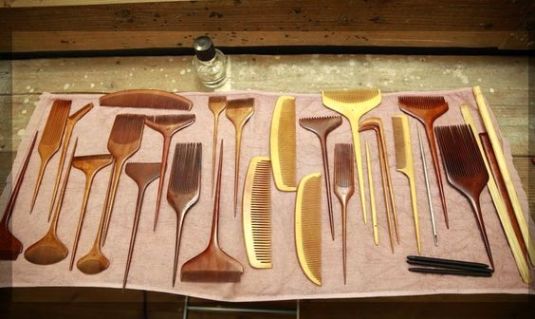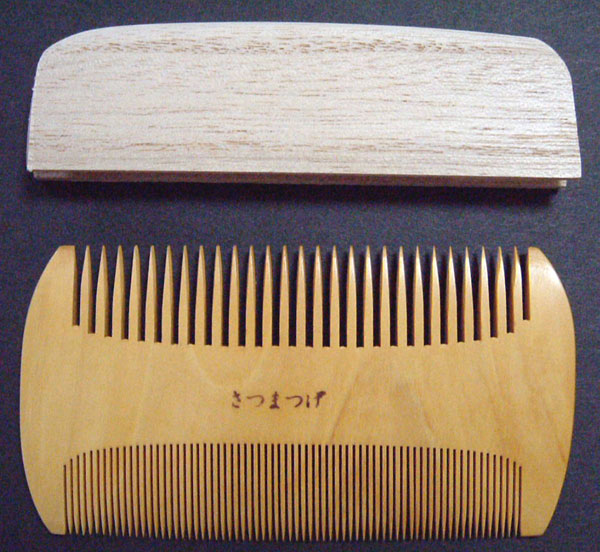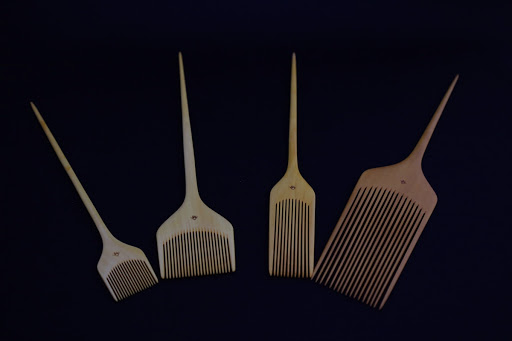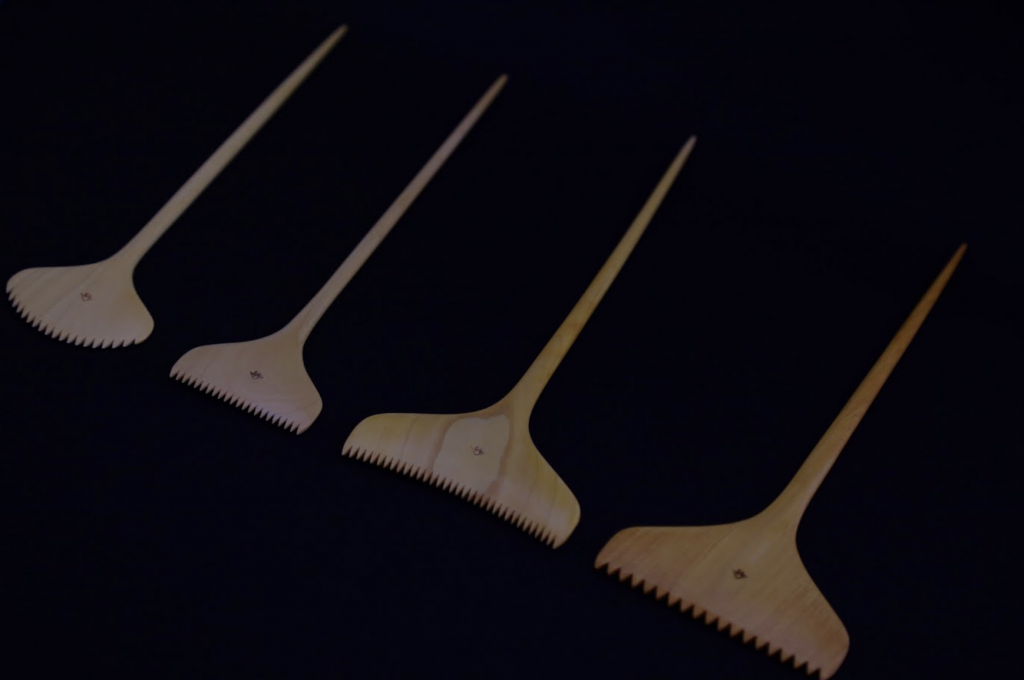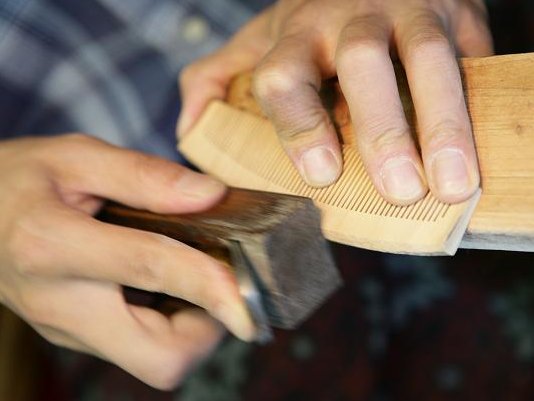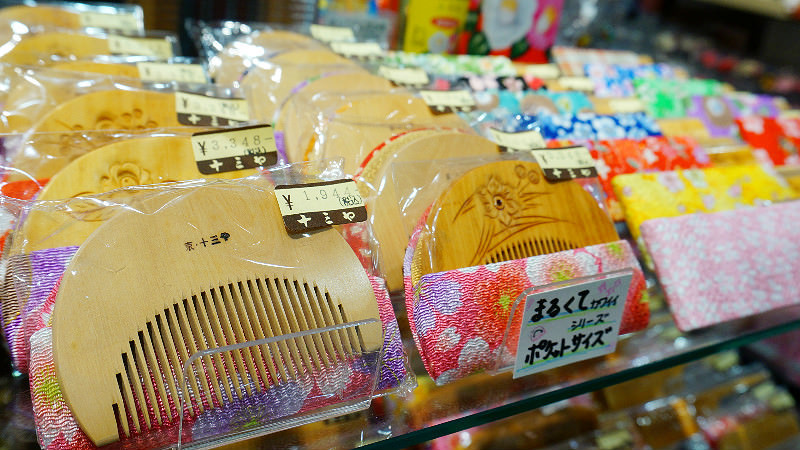Keeping your hair well groomed and shiny is an important aspect of overall health.
While there are many haircare implements available in the market, plastic and metal combs tend to create a lot of static. Static can cause the hair to be brittle. Did you know that a popular Japanese product called Tsugegushi or wooden boxwood comb can help your scalp maintain better circulation and spreads your natural oils evenly to avoid dryness. Let’s learn more about this very useful product.
History of Tsugegushi
The Tsugegushi, also known as boxwood comb, have been used in styling traditional Japanese hairstyles (Nihon gami) for centuries. They are seen as sacred objects because people in ancient times would use these combs to brush their hair believing that each strand held spiritual energy.
Similar types of combs have been found at archeological sites that date back to the Jomon period (c. 10,500 BCE–c. 3rd C. BCE). It is thought that the Nara period was the time when the combs started to be made from boxwood (tsuge) because it does not generate static electricity. They are also said to be gentle to the skin. The amber colored combs become more attractive when used over time making them prized possessions.
“Kushi” is the Japanese term for comb, and can easily be related to the numerals, nine (ku) and four (shi). This numerical combination gave the name, Jūsan, the sum of four and nine, which comb shops used during the Edo period. To this day, there are still establishments that incorporate the name Jūsan’ya (Thirteen Shop) in their comb shops. Other names that they went by were Nijūsan’ya (Twenty-three Shop) as comb came from China, and the dynasty then was 唐, pronounce “tō” also sounds similar to number ten in Japanese (we call jū or tō for 10), so combs from China: 10+9+4 = 23 and it refers to a Comb Shop. Both Jūsan’ya and Nijūsan’ya are famous comb shops in Kyoto even now.
Types of Tsugegushi
Tsugegushi come in two forms: the tategushi or vertical combs where the handle is parallel to the teeth, and the yokogushi or horizontal combs, which has a handle that runs perpendicular to the teeth. Boxwood combs have different functions and varies in sizes, number of teeth, length and thickness designed for creating different Japanese hair styles.
• Tokigushi (detangling combs) is a type of comb that is usually about 16 cm long. This type of comb is used for untangling and straightening the hair. One can choose a tokigushi comb from its number of teeth and thickness to suit to their hair’s characteristic and volume.
• Sukigushi has fine teeth and is used to clean the hair and remove unwanted matters such as dandruff and dirt.
• Bindashi (sideburn puffers) are vertical combs that resembles the shape of a fork and is used in hairdressing. The long handle of the comb is used to arrange these puffed shapes at the temples as well as sweeping fallen hair strands back to the temples.
• Naginata (pole sword) are used to make fine adjustments to any hairstyle.
• Hamaguri (clam) are clam-shaped combs used for putting the finishing touches on atop-knot.
• Genroku combs are employed in hairstyle finishing and retouching if the hair has been disturbed. There have short teeth and vary in thickness and number starting with the broadest comb then working the hair down to the finest one to tidy up the hair.
What Are the Benefits?
Boxwood combs reduce frizz because it doesn’t generate static electricity compared to the synthetic and plastic combs. The polished teeth of the comb gently sweeps your hair which reduces hair breakage and damage. The micro pores of the comb provides an optimal and balanced level of moisture to your hair, resulting in more shiny and glossy strands.
The quality of material and craftsmanship of these boxwood combs ensures a durable finish. It is also gentle to the skin and works well with any type of hair. Continuous usage of a Tsugegushi may also help improve the overall texture of your hair as well.
How is it Made?
Producing tsugegushi is a lengthy process which adds to the quality of the product. An ideal wood for a premium tsugegushi comes from a boxwood tree that is around 30 years old. It is harvested between August and September, when the weather is hot. The wood is then smoked for another ten years until they are perfectly aged well-dried. After the wood is cut into desirable sizes, the next step is to carve the teeth, a process called habiki. The comb’s teeth is then filed (hazuri) to smooth and shapen the edges and ends. When the teeth of the tsugegushi is ready, it is polished by sanding the comb surface with a horsetail plant board. The horsetail plant does not leave flaws and produces a high-quality product. Finally, it is soaked in camellia oil for a more finished look.
Taking Care of Your Comb
Tsugegushi is a treasured possession and if you want to last it for a very long time, just keep in mind these simple tips. One of the most important things to remember is to never get your comb wet. Don’t use it over your damp hair or clean the combs using water. Instead, clean it using a soft brush. Traditionally, a tsugegushi is soaked over night using camellia oil or olive oil. Before using it again, make sure to wipe off the oils. In time, the more the comb is used and properly cared for, the more attractive it will become.
Love Japan?
LEARN BASIC JAPANESE NOW! Check out our Udemy Online Japanese Lessons.
Want your own personalized Japanese name seal? Order a custom Hanko stamp online!

